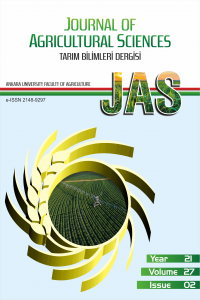Association of Satellite RNA with Grapevine fanleaf virus in its Geographical Origin and Sequence Characteristics
Association of Satellite RNA with Grapevine fanleaf virus in its Geographical Origin and Sequence Characteristics
___
- Reference1: Dr. Saber Delpasand Khabbazi , Saber.delpasand@gmail.com
- Reference2: Prof. Dr. Filiz ERTUNÇ, ertunc@agri.ankara.edu.tr
- Refrence3: Prof. Dr. Ali Ergul, ergul@ankara.edu.tr
- ISSN: 1300-7580
- Yayın Aralığı: Yılda 4 Sayı
- Başlangıç: 1995
- Yayıncı: Ankara Üniversitesi
Sevda GHASEMİ GERMİ, Morteza BARMAKİ, Salim FARZANEH, Mandana AMİRİ
Mehmet DEMİRALAY, Aykut SAĞLAM, Fuat YETİŞSİN, Asım KADIOĞLU
Nihal GÜZEL, Şeref TAĞI, Mehmet ÖZKAN
Effects of Melatonin on Morus nigra cv. 'Eksi Kara' Exposed to Drought Stress
Duygu ÖZELÇİ, Gülçin BEKER AKBULUT, Emel YİĞİT
Afsaneh DELPASAND KHABBAZİ, Nemat SOKHANDAN BASHİR, Shaheen NOURİNEJHAD ZARGHANİ
Determination of Pneumatic Conveying Characteristics of Canola Seeds
Elif Saadet ARICAN, Sefer DEMİRBAŞ
Zeki ACAR, Erdem GÜLÜMSER, Sema LEBLEBİCİ, İlknur AYAN, Cihan DARCAN
